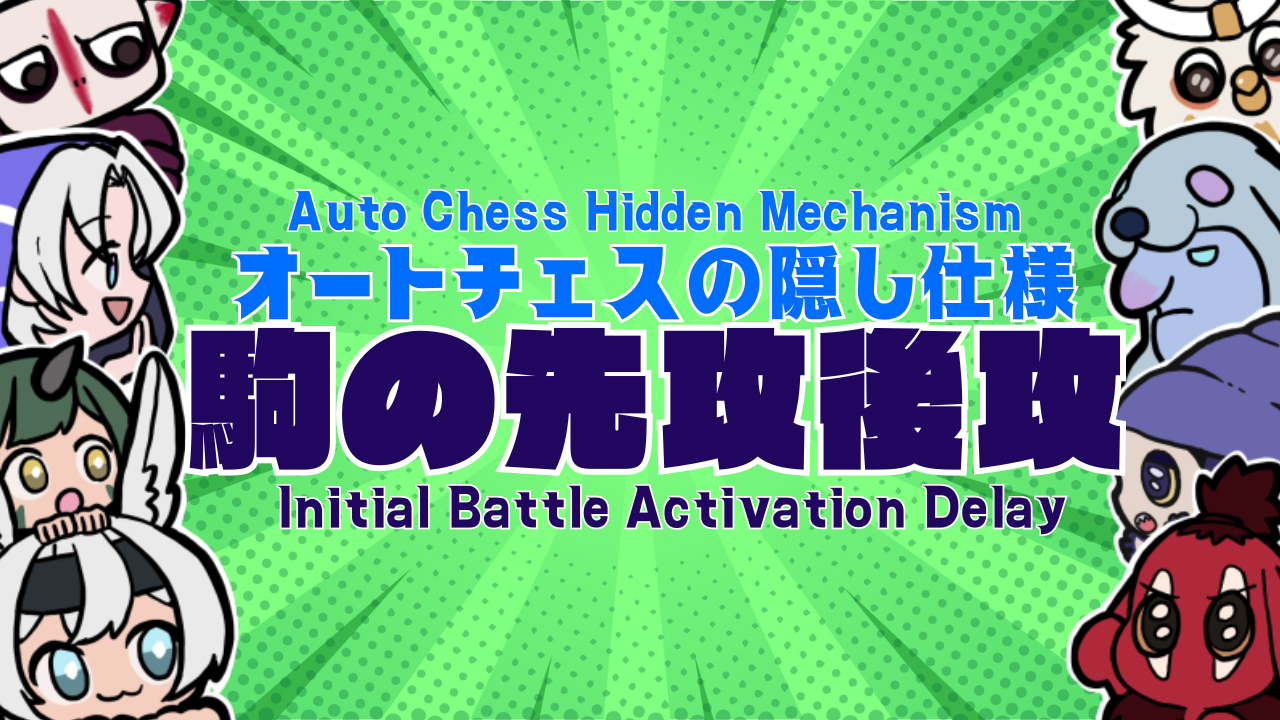Have you ever puzzled over why, in certain instances, your units seem to spring into action faster than your opponent’s, or why, during the 15th round against wolf creeps, these wolves might leap into action before your units even start to respond? These occurrences aren’t random – they’re part of Auto Chess’s intriguing hidden mechanism: the battle activation delay.
Battle Activation Timing Breakdown:
The initial activation timing for chess pieces is segmented into various components:
Start of Battle Activation Delay: The activation sequence for both players’ boards at start of the battle is staggered by a random 0.3-second interval, meaning one player’s team will consistently gain the upper hand by activating synergies, items, and skills slightly sooner. This is particularly evident during creep rounds, where creeps may act before or after your team depending on this variation. Please refer the specific Scenario 1 below:
(Scenario 1: Round 10 Preparation Phase)
(Scenario 1: Round 10 Start of Round)
As you can see from the Scenario 1 that your units already started using its skills and attacks. For instance, the Resentful Murk has already swapped places with one of the rock creeps, and all your units have begun their attack. Meanwhile, one of the rock creeps hasn’t even started moving yet. This is the case where you are getting 0.3-second delay advantage over creeps.
Next, we’ll refer the Scenario 2 below:
(Scenario 2: Round 10 Preparation Phase)
(Scenario 2: Round 10 Start of Round)
In Scenario 2, we see a distinct case where the rock creeps initiate movement before your units. Although the Resentful Murk’s swap skill is designed to be instantaneous, we can see that she is just beginning her skill animation, while the rock creeps have already started moving. This situation illustrates a scenario where the creeps gain a 0.3-second advantage over your units.
In late-game scenarios, a 0.3-second advantage can be critical; for instance, if an opponent has the Shaman Synergy, their “Hex” effect will likely affect one of your units before your team’s item/abilities can take effect. This can compromise even well-equipped units, such as a carry with a “Fate Robe” meant to shield against magic damage, as the timing may not always align for protection.
Similarly, when both players doing 5 Dragon Synergy, every round one of the players will always benefit from the instant cast skill activation sooner due to this 0.3 sec timing difference, thereby gaining a potentially decisive strategic edge.
Class Activation Timing: Assassin pieces have a fixed activation delay of 0.5 seconds, while other classes are set at 0.25 seconds.
Individual Piece Movement Delay: Each piece has a randomized movement delay ranging from 0.1 to 0.5 seconds.
Skill and Basic Attack Preparation: General skills follow this sequence: the preparation begins when mana is full, and upon completion, the skill is cast, and mana is depleted. If the piece is controlled or loses its target during preparation, the process restarts. Skill casting will cease if mana is drained before completion.
I will continue post hidden mechanism of Auto Chess from now on and please feel free to ask anything in the comment section. Let’s explore the deeper strategies and secrets of Auto Chess together!
Special Thanks!
Hashi: https://twitter.com/takumikhashi1


